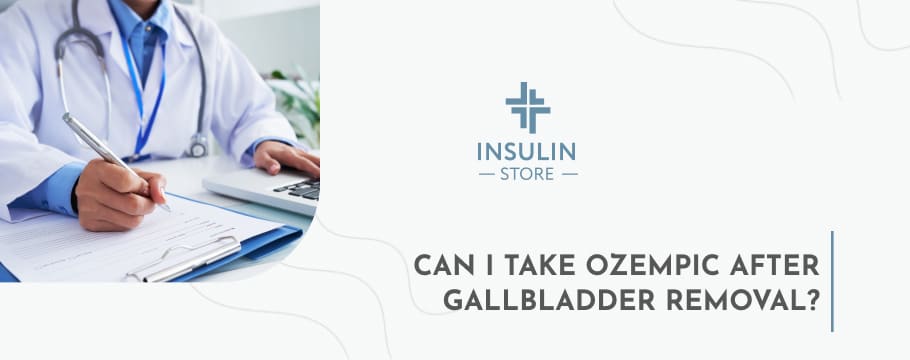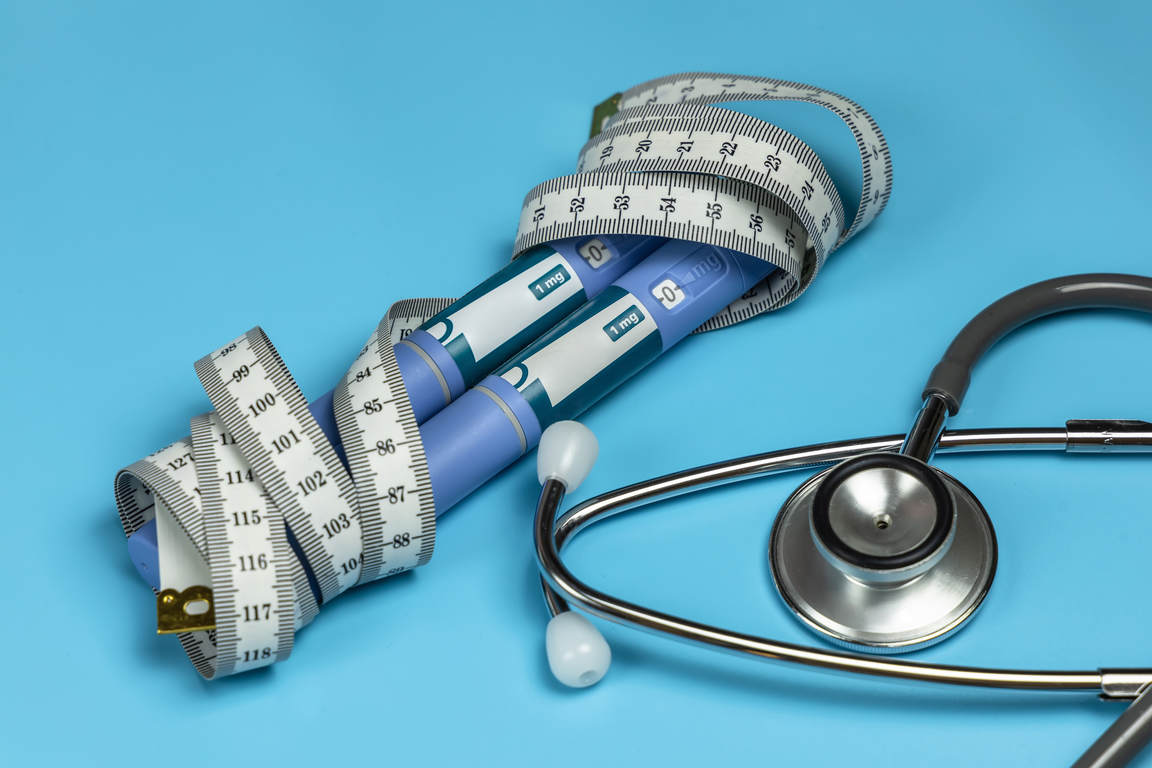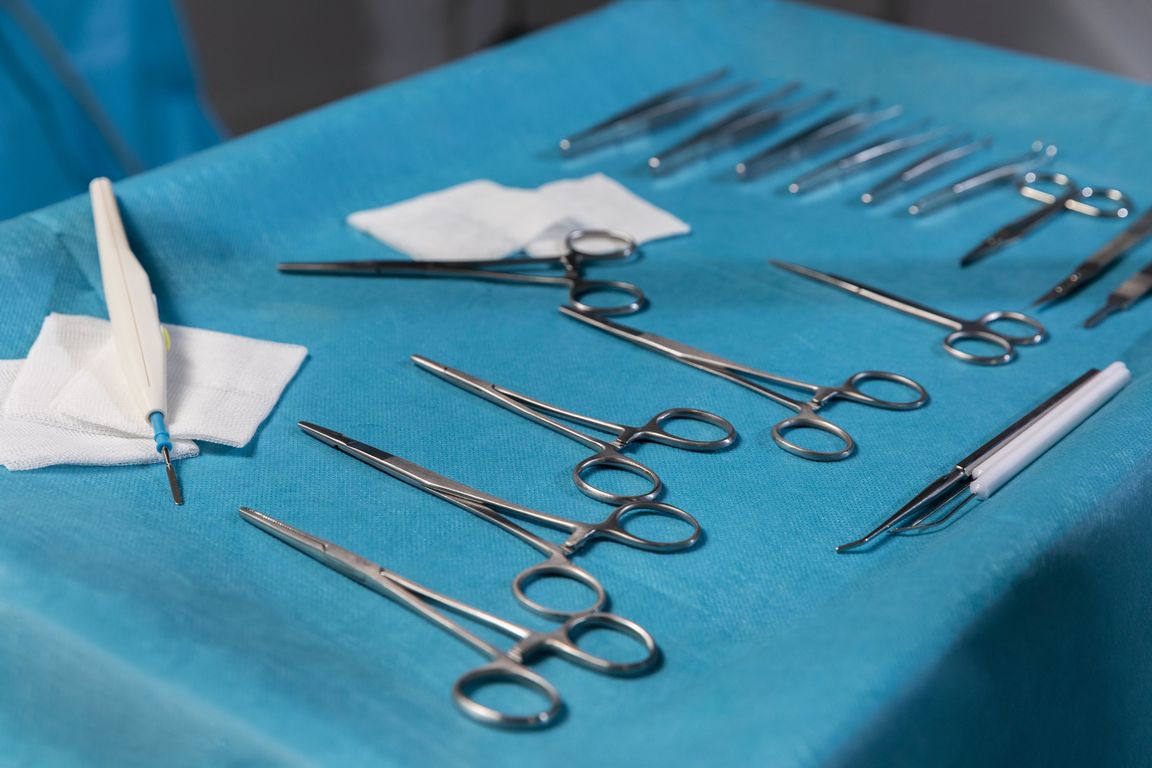
Can I Take Ozempic After Gallbladder Removal?
After gallbladder removal (oftentimes forced by gallbladder disease), many individuals question whether it’s safe to take certain medications for blood sugar and weight management, including Ozempic. This article explores the relationship between Ozempic and gallbladder removal by breaking the topic into four main parts: understanding Ozempic, the gallbladder’s function and reasons for removal, the specific considerations for taking Ozempic after surgery, and final thoughts.
If you are currently looking for an online store with the best possible Ozempic from Canada price, check out what InsulinStore offers. Here, you will find a great range of diabetes management medications (including semaglutide medications) with reasonable wholesale discounts.
What Is Ozempic and How to Take It?
Ozempic (active ingredient: semaglutide) is a widely prescribed medication for managing type 2 diabetes, known for its ability to improve blood sugar control (or, in other words, to lower blood sugar levels) and promote weight loss. Originally developed as a GLP-1 receptor agonist, Ozempic enhances the body’s insulin production and slows digestion, making it an effective tool for patients struggling with high blood sugar levels. Administered through a once-weekly injection, it has become a convenient and increasingly popular treatment option. However, like any medication, Ozempic carries potential side effects, ranging from mild gastrointestinal discomfort to more serious concerns like pancreatitis and gallbladder issues. Understanding how Ozempic works, its benefits, and its risks is essential, especially for individuals with a history of gallbladder problems or those who have undergone gallbladder removal.
Definition
Ozempic (semaglutide) is a medication primarily used to manage type 2 diabetes. It works by mimicking the hormone GLP-1, which increases insulin secretion, decreases glucose production by the liver, and slows gastric emptying, helping to regulate blood sugar levels more effectively. It has also gained popularity for its weight-loss benefits.
Administration
Ozempic is an injectable medication taken once a week. It comes in a pre-filled pen that patients can administer subcutaneously (under the skin). The medication is typically injected in the abdomen, thigh, or upper arm, with rotation of injection sites recommended to prevent skin irritation.
Benefits
Ozempic’s primary benefit is controlling blood sugar in individuals with type 2 diabetes. By improving the body’s response to insulin and reducing blood glucose levels, it helps prevent complications such as heart disease, kidney problems, and nerve damage. Furthermore, Ozempic promotes weight loss by reducing appetite and slowing digestion.
Side Effects
Ozempic, like many non-dangerous medications intended for professional use, carries a certain risk of potential side effects that might appear within the first few weeks after its intake. The most common body’s natural response to the medication is a gastrointestinal issue, such as nausea, vomiting, diarrhea, or constipation. Other side effects may include headaches, dizziness, and fatigue. Most side effects are mild and diminish as the body adjusts to the medication.
While rare, Ozempic can also lead to serious side effects such as pancreatitis, kidney damage, or allergic reactions. Additionally, some studies have shown an increased risk of gallbladder-related issues, which is a critical consideration for individuals who have had their gallbladder removed.
What Is Gallbladder and Why to Remove It?
The gallbladder plays a key role in the digestive system, storing bile produced by the liver and releasing it into the small intestine to aid in the breakdown of fats. Despite its important function, the gallbladder is not essential for survival, and problems such as gallstones or inflammation can lead to the need for its removal. Gallbladder issues often cause painful symptoms, including severe abdominal pain and digestive discomfort, prompting doctors to recommend a cholecystectomy or surgical removal of the organ. While gallbladder removal is a common and generally safe procedure, life afterward can require some dietary adjustments as the body adapts to digesting fats without the organ’s bile storage.
The Role of Gallbladder in Digestion
The gallbladder is a small organ located beneath the liver, responsible for storing bile, a digestive fluid produced by the liver. Bile aids in breaking down fats and helps the body absorb fat-soluble vitamins. During meals, the gallbladder releases bile into the small intestine to assist in digestion.
Common Gallbladder Problems
Problems with the gallbladder often arise when bile becomes imbalanced, leading to the formation of gallstones—small, hard deposits that can block bile ducts and cause pain or infection. Other gallbladder-related issues include inflammation (cholecystitis) and biliary dyskinesia, a condition that impairs the release of bile.
Gallbladder Removal
Gallstones, inflammation, or other gallbladder problems may cause symptoms such as severe abdominal pain, nausea, vomiting, and bloating. If these issues become chronic or severe, doctors may recommend having the gallbladder removed (with the help of a procedure called cholecystectomy) to prevent further complications.
Having the gallbladder removed is typically performed through laparoscopic surgery, a minimally invasive procedure that requires only small incisions. During surgery, the gallbladder is removed entirely. This procedure is relatively routine and has a high success rate with a short recovery time.
Life After Gallbladder Removal
After gallbladder removal is added to their medical history, most people can lead normal, healthy lives and continue to have good metabolic health. The liver continues to produce bile, but it flows directly into the small intestine rather than being stored in the gallbladder. Some individuals may experience changes in digestion, particularly when consuming high-fat foods (including healthy fats) and unhealthy foods, as the body adapts to this change.
What Are the Peculiarities of Taking Ozempic After Gallbladder Removal?
Taking Ozempic after gallbladder removal requires special consideration due to the medication’s impact on digestion and its association with gallbladder-related issues. Together with providing optimal glycemic control, Ozempic slows gastric emptying, which can complicate digestion for individuals without a gallbladder, potentially worsening symptoms like bloating and nausea. Additionally, while gallstones are no longer a concern after gallbladder removal, there remains a risk of bile duct complications. For patients managing type 2 diabetes or weight loss, balancing the benefits of Ozempic with these digestive challenges is essential for their overall health (including cardiovascular health). Careful monitoring, potential dosage adjustments, and dietary modifications are key strategies to ensure that Ozempic can be safely and effectively used post-surgery.
Ozempic’s Impact on Digestion
Since a patient’s body reacts to the intake of Ozempic by slowing down gastric emptying, this may lead to further digestive issues for individuals who no longer have a gallbladder. Without a gallbladder to regulate bile release, the body may already struggle to process fats efficiently, and Ozempic’s effect on digestion could exacerbate symptoms like bloating, nausea, or diarrhea.
Risk of Gallbladder-Related Complications
Ozempic and other glucagon-like peptide 1 receptor agonists have been associated with an increased risk of gallbladder issues, such as gallstones and cholecystitis. For individuals who no longer have a gallbladder, this risk shifts to potential bile duct complications, such as bile duct stones, which could still occur post-surgery. Thus, the intake of Ozempic (either with the aim of regulating blood sugar levels or preventing excessive weight gain) in these cases requires profound medical considerations.
Monitoring Digestive Symptoms
Individuals taking Ozempic after gallbladder removal should monitor their digestive symptoms closely. If nausea, abdominal pain, or digestive discomfort worsens, it’s essential to ask for a free consultation with a healthcare provider and request personalized advice. Adjusting dietary habits, such as reducing fat intake, increasing the consumption of lean proteins, and eating smaller meals, may help mitigate these symptoms.
Weighing the Benefits and Risks
Despite potential digestive complications, Ozempic offers significant benefits for people with type 2 diabetes or those needing to lose weight. Improved blood sugar control and reduced body weight can lead to long-term health benefits. However, the decision to continue or start Ozempic after gallbladder removal should be made in consultation with a healthcare provider, who can evaluate the benefits in relation to the individual’s health status.
Adjustments to Ozempic Dosage and Diet
To minimize potential digestive side effects, doctors may suggest starting with a lower dose of Ozempic or adjusting the dosage over time. Additionally, adopting a diet low in fat and high in fiber can help the body better digest food without the assistance of the gallbladder. Gradual weight loss is also recommended to avoid complications that can arise from rapid weight reduction, such as bile duct stones.
Final Words
Taking Ozempic after gallbladder removal is possible, but it requires careful consideration and consultation with your healthcare provider. While the medication offers significant benefits in managing type 2 diabetes and promoting weight loss, it can exacerbate digestive issues in individuals who no longer have a gallbladder. Monitoring symptoms, adjusting dosage, and making dietary changes are key strategies to ensure that Ozempic use is safe and effective. Ultimately, your doctor can help guide you in determining whether Ozempic is the right medication for you based on your specific health needs and post-surgery recovery.

